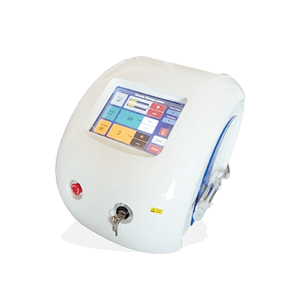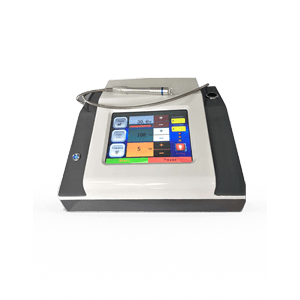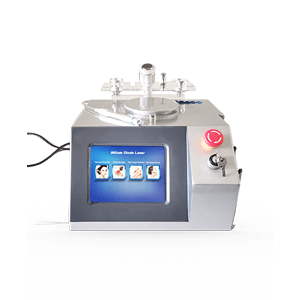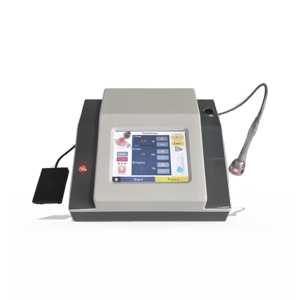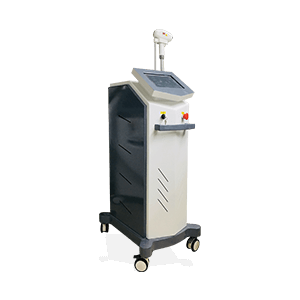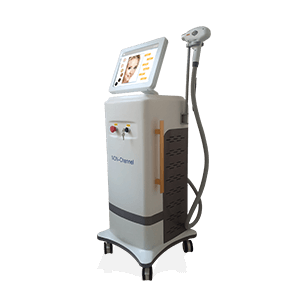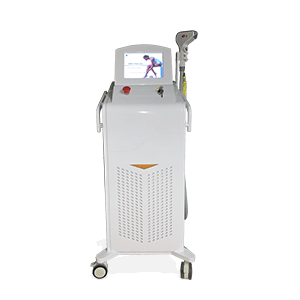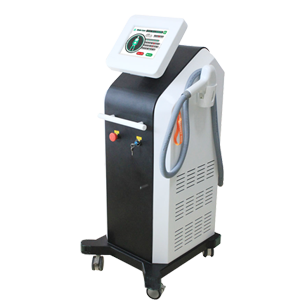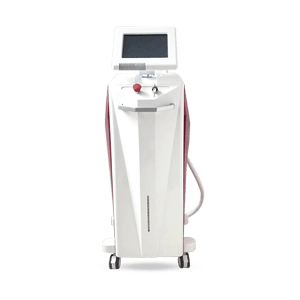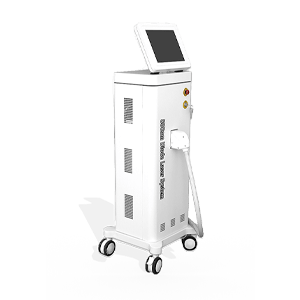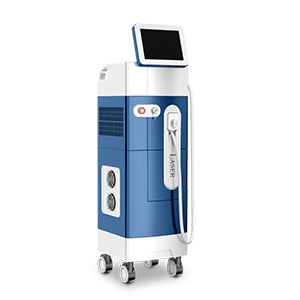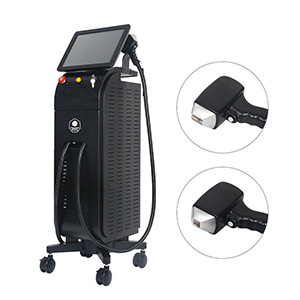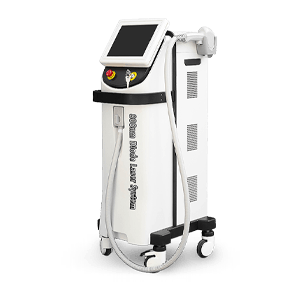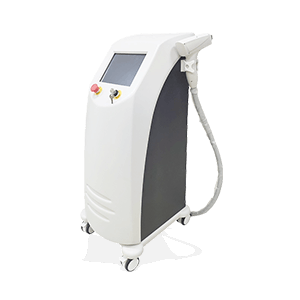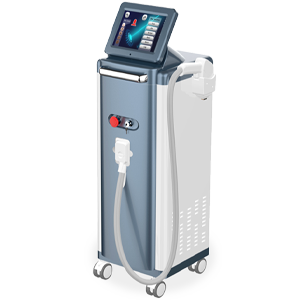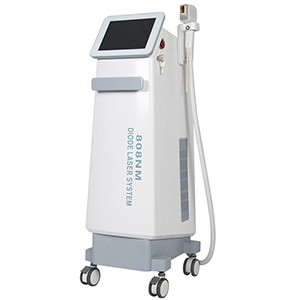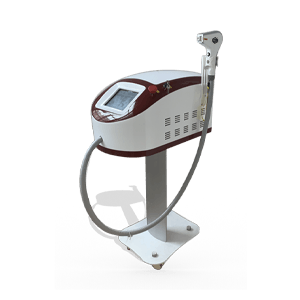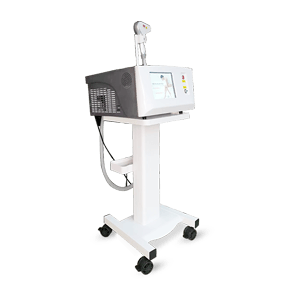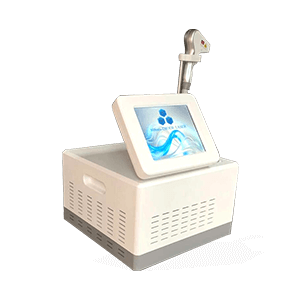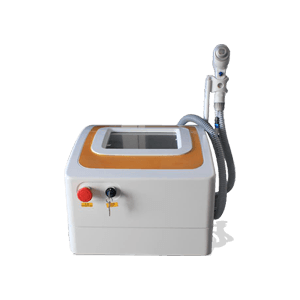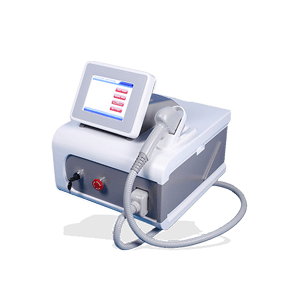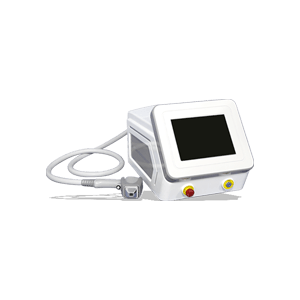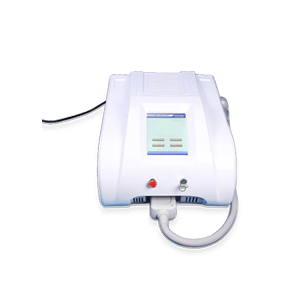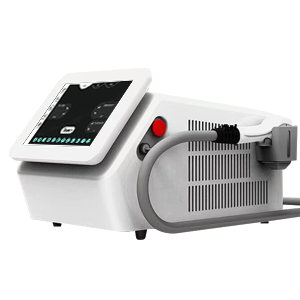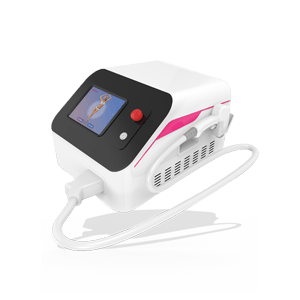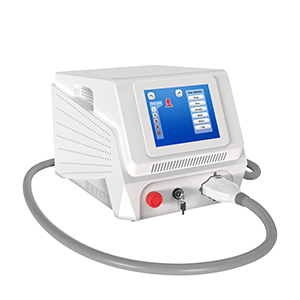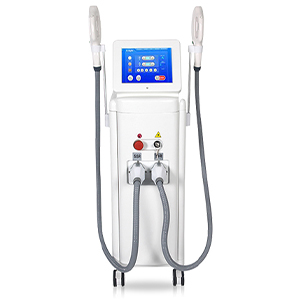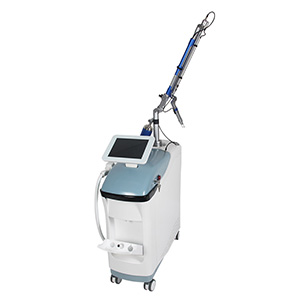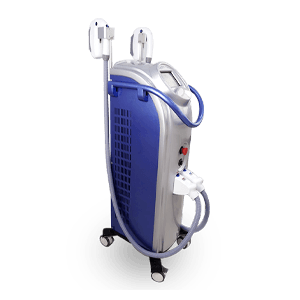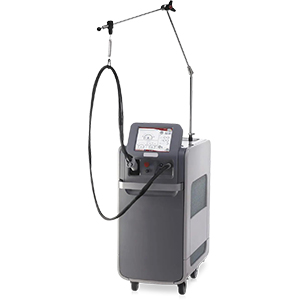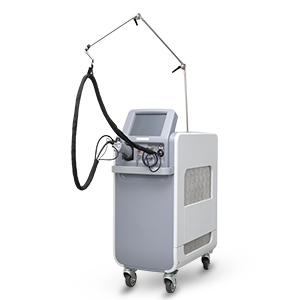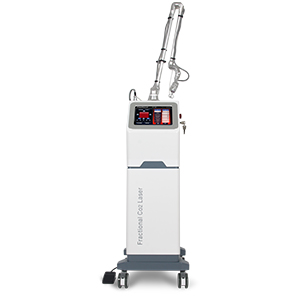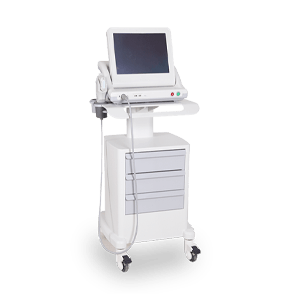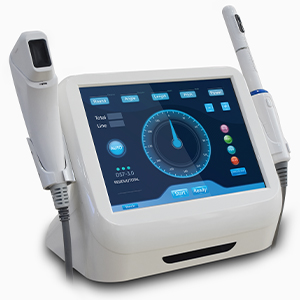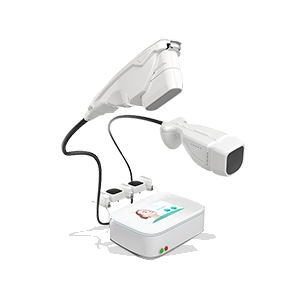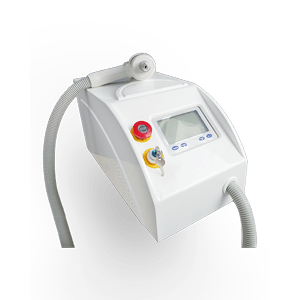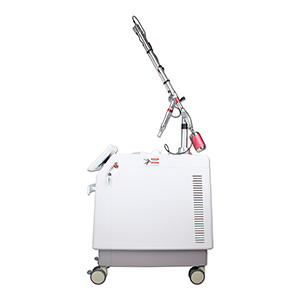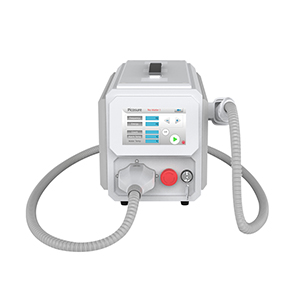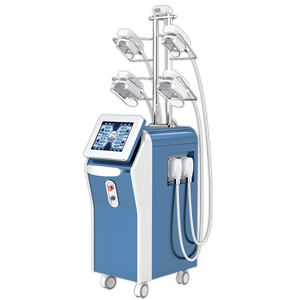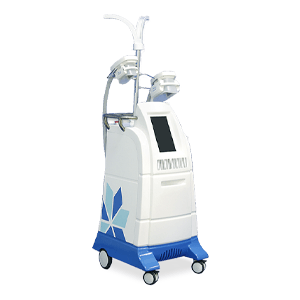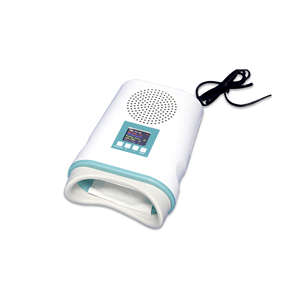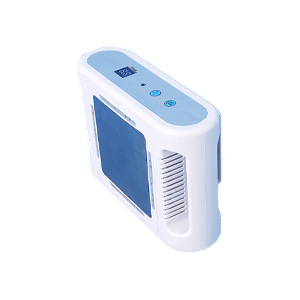Aesthetic Medical Devices
Aesthetic medical devices mean all medical devices that are used for various aesthetic procedures, which include tattoo removal, unwanted hair removal, excess fat removal, anti-aging, varicose lesions, skin tightening, etc., that are used for beautification, correction, and improvement of the body. Medical devices are health products that have a physical or mechanical effect when used on human bodies. Aesthetic procedures include both surgical and non-surgical procedures. The surgical procedure includes liposuction, cryolipolysis slimming breast implants, facelifts, radiofrequency, and other related procedures. The non-surgical procedures include non-surgical liposuction, skin tightening procedures, etc.
Latest Aesthetic Medical Devices
The latest Aesthetic Medical Devices include the 808nm Diode laser hair removal, SHR IPL, E-light hair removal machine, 980nm diode laser Laser Spider Vein Removal, RF treatment apparatus, ND: YAG laser and (optional) Nd Yag System therapy equipment, slimming machine to bring beauty benefits of health to clients over the entire globe.
Medical Portable 980nm Diode Laser Vascular And Leg Varicose Veins Removal Devices
Best Professional Diode Laser Hair Removal Machines in clinics
intense pulsed light machines
alexandrite laser hair removal & long pulsed nd: YAG laser machines
Ultherapy devices for sale
ND:YAG lasers
body contouring devices
Application
- Skin Resurfacing and Tightening
- Body Contouring and Cellulite Reduction
- Hair Removal
- Tattoo Removal
- Skin Rejuvenation
- Laser facial treatment
- Skin Toning Treatment
- Ipl Photorejuvenation
Medical aesthetic technology has advanced rapidly over the past 20 years. The highly advanced technologies have offered a good range of products and solutions to patients seeking medical assistance. New technologies are being developed and introduced into the market, including the utilization of laser, dynamic pulse control, radiofrequency, and infrared technologies. In recent years, skin-tightening and non-invasive fat technologies have created a replacement niche within the medical aesthetic technology market. they need to be proven financially lucrative and are expected to dominate within the near future.
Non-invasive Technologies
The non-invasive technologies approach different medical aesthetic treatments.
- Skin ablation/controlled surface injury to stimulate collagen production and improve skin quality and reduce scar impression
- Optical light/color wavelengths for treating discoloration, unwanted scarring discoloration, veins, and hairs
- Thermal/skin regulation (cooling or heating) to treat fat cells and to do body & face contouring.
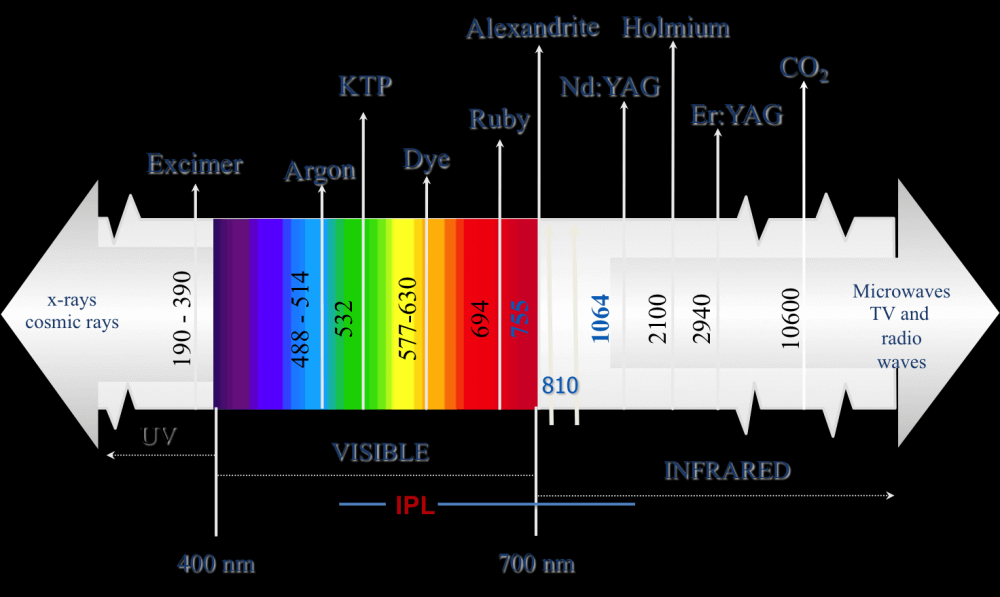
See spectrum we will see where different technologies are active. While the radiation on the left end of the spectrum (X rays and cosmic rays including UV from the sun) is dangerous for our bodies in excess quantities and frequencies, the radiation gets milder and milder moving towards right the spectrum. At the proper end is infrared that in lower quantities is sort of harmless but because it is extremely water absorbable and non-selective/dispersed on targets, it also gets harmful to human bodies that consist of 70% of water in higher quantities. In terms of medical aesthetics equipment, the lower safety limit is generally seen to be around 500 nm and goes up to a couple of thousand nm.
Our bodies act differently to different wavelengths. For example, while around 755 nm is effective in treating light/blond hair types on light skin types, 810 nm or even more is needed for darker hairs and skin tones. Dark spots and discolorations (melanin), as well as hemoglobin (more superficial smaller blood vessels), are destroyed best at 500-600 nm wavelengths but the skin tone is crucial in choosing the right length – the darker the skin the higher the wavelength needed.
Radio Frequency
The application of RF energy in aesthetic medical devices
The application of RF energy in medicine is well established. As such, RF is the basis of magnetic resonance imaging (MRI) and surgical diathermy, both commonplace applications being used millions of times per year in hospital practice. In cardiology, RF is used for ablative interventions, for example, ablation of accessory conduction pathways, and in oncology/oncological surgery for tumor/metastasis ablation. Since 2000, RF treatments have been increasingly used in medical aesthetics, owing to their versatility, efficacy, and safety.
Electromagnetic spectrum
RF is a part of the electromagnetic spectrum and its frequency range depends on the industry. In medicine, RF (radio-frequency) energy is an alternating electrical current in a frequency range of 100kHz – 6MHz. The pure controlled thermal effect is important as at lower frequency there is nerve stimulation and at a higher frequency, there is more radiation and less localized RF (which is very much wanted for precise treatment).
RF working principle
RF works by electrical current conducted by the tissue. This increases ion collision and creates kinetic energy. This kinetic energy is transformed into thermal energy (heat), which causes controlled damage to skin tissue. The damage triggers natural healing mechanism resulting in tissue renewal (collagen, elastin, HA) and regeneration (thicker dermis).
Radio Frequency benefits
Radiofrequency has many benefits in aesthetic medicine as a source of energy. It is relatively easily created and with bipolar technology well-controlled and safe. Due to the heat creation, it makes an excellent medium for not just fat cell destruction, and body and face contouring but also skin tightening and other indications such as acne and scar management (if built into the device).
Other technologies such as Ultrasound and Cryo-therapies can be effective to a certain extent in either addressing flaccid (flabby) skin or killing fat cells but not both at the same time as RF technology does. This combined with the fact that RF is in general a very versatile technology that can be used for multiple aesthetic medicine indications makes it a cost-effective and preferred technology that is the most utilized technology in aesthetic medicine and also specifically compared to the above two technologies.
There are 2 forms of RF:
- Radiation RF that is radiating from a distance with no contact with the skin.
- Conductive RF whereby the electrodes have to be in contact with the skin. There are 2 types of conductive RF:
- Monopolar – one electrode is touching the skin and the other one is held by the hand or tied to the back. The electrical current then flows through the body.
- Bipolar or multipolar – both/all electrodes are touching the skin and the area of current flow is limited.
Radiation and monopolar RF penetration depth into the body is not controlled, and neither is the amount of electrical energy that is passing in various body areas. The bipolar RF has a controlled penetration depth, as well as energy input, and is thus the most desirable form to be used.
Non-invasive Cryolipolysis Technologies
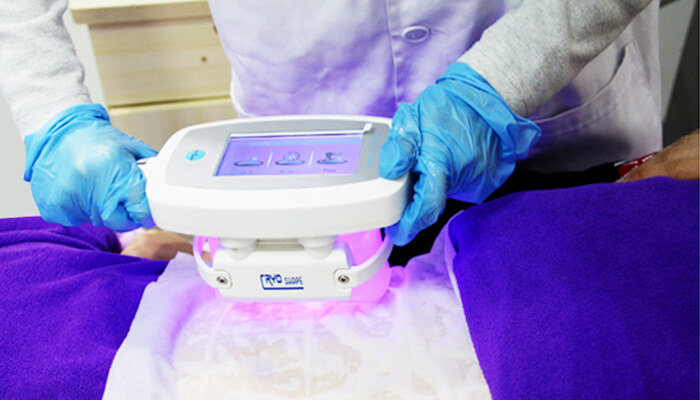
Cryolipolysis may be a non-invasive fat reduction treatment, during which practitioners place a little suction cup on the client’s skin. The device gradually extracts body heat until the subcutaneous fat is frozen. During the procedure, the applicator delivers precisely controlled cooling conditions that are proven to focus on and eliminate fat cells in specific areas of the body.
When fat cells are exposed to express cooling, it triggers a process of natural removal that gently reduces the thickness of the fat layer for effective fat reduction. Fat cells, consistent with researchers at Harvard school of medicine, are very sensitive to the cold. Intense, localized freezing kills adipocytes – the fat cells involved in forming fat tissue.
Low temperatures cause fat reduction by damaging the fat cells. The fat cells gradually die and are then naturally metabolized by the systema lymphaticum. the speed of energy extraction or cooling is controlled during the procedure, leading to a discount in fat bulges that are visible in most patients within 2 to 4 months.
The fat cells within the treated area are gradually eliminated through the body’s normal metabolic processes. the sole drawback of cryotherapy treatments is that you simply can’t see the results immediately. it’ll take a couple of months for the whole process to be completed, including metabolizing dead fat cells. Each treatment lasts about an hour, and a series of 1 to three sessions could also be required for effective body contouring
Laser Technologies
Laser technologies can be either light-sourced or electricity sourced and use mirrors to channel and focus the beam. This technology can be categorized according to the delivery mechanism of the beam:
- Diode/semi-conductor with excellent efficiency (40-50%)
- Crystal/solid beam that is safe but has a low efficiency (1-3%)
- Gas/CO2 with medium-level efficiency (10-20%)
- Dye/liquid beam with quite low efficiency (0.5%)
All but diode lasers got to be contained in large boxes while the diode is often contained in small spaces including hand applicators that with high efficiency make this beam most desirable for aesthetic medicine use.
Laser technologies are often very effective in terms of precision ablation (small treatment areas like moles, birthmarks) because the rays are coherent and concentrated because it’s one wavelength. this is often also why the beam is extremely bright.
The bright beam could also be directed through Eye protection: lasers in far-frequency IR like CO2 or Erbium, aren’t so dangerous since they’re absorbed within the cornea and not much is left to harm the eyeball and lens. Near/lower frequency IR is dangerous because isn’t optimally absorbed in water, therefore, won’t be absorbed in the cornea, it’ll undergo the attention lens which can focus it to the retina and make a blind spot. Therefore eye protection goggles are critical a part of laser treatment both for the patient and for the healthcare professional treating the patient.
Hair removal is the largest area of usage for lasers. Melanin in the hair shaft absorbs the light, which is transformed to heat. This heat is conducted on the surrounding follicular cells and damages them. The hair is detached from the follicle and comes out after 1-2 weeks. The damaged follicle is gradually replaced by non-functional internal scar tissue. This leads to a gradual reduction in hair production and ultimately permanent removal.
Permanent hair removal requires multiple treatment rounds as the hair growth cycle is individual for each hair and the laser beam needs to capture the hair at the right time of the cycle in order to damage the follicle. A number of treatments vary between the individuals based on their DNA, the number of hair follicles, and hair growth pace.

If you are interested in learning more about specific equipment or discussing purchasing aesthetic laser machines or other medical laser machines, fill out the form below and we will get back to you ASAP. Or simply call 0086 15001300057.

